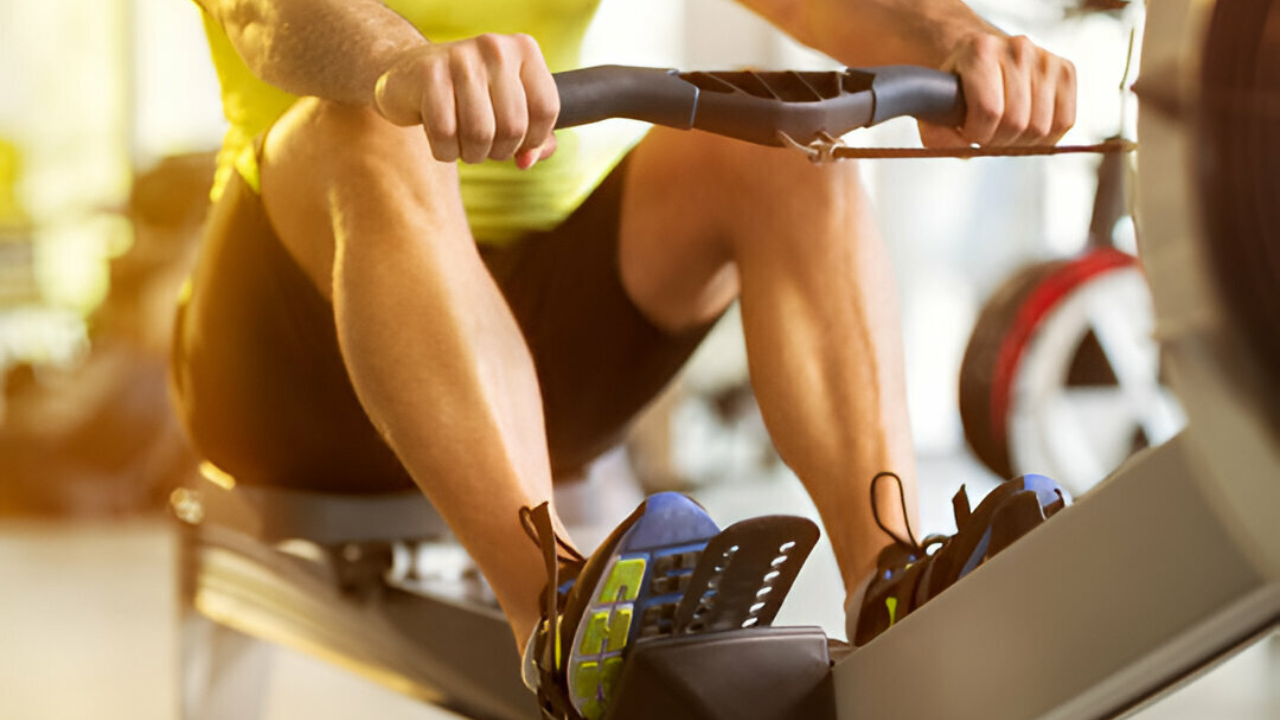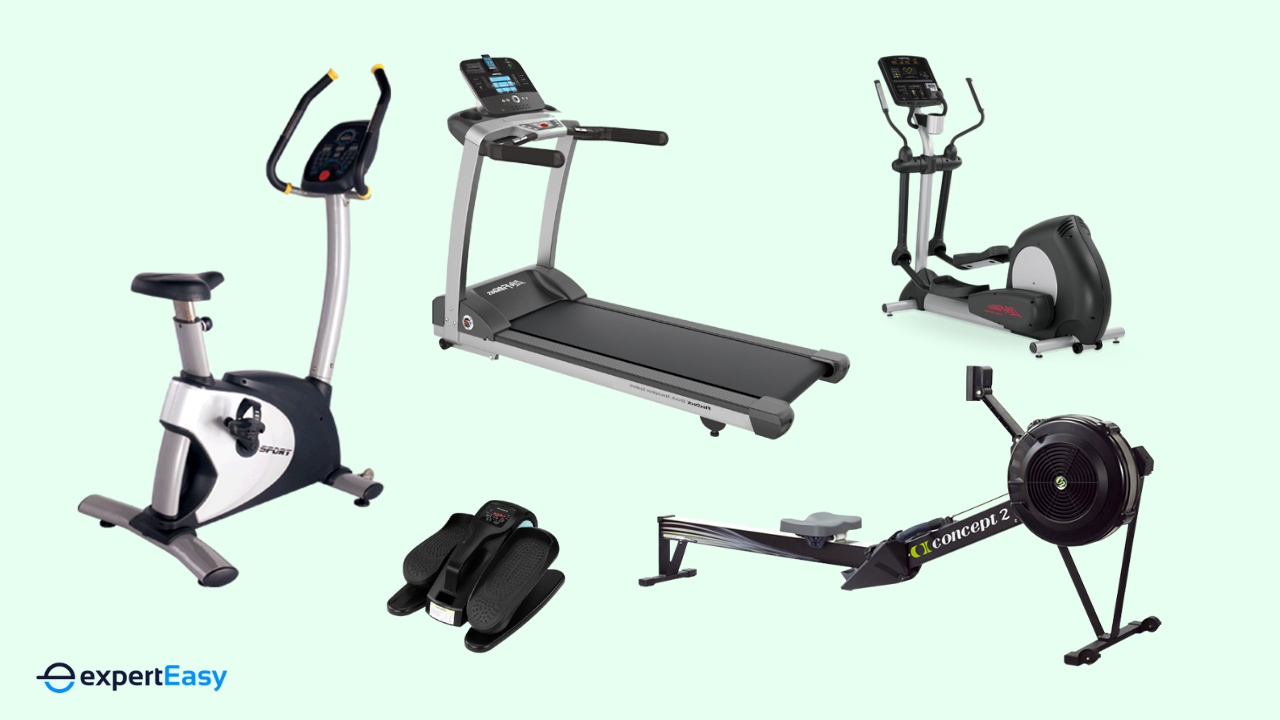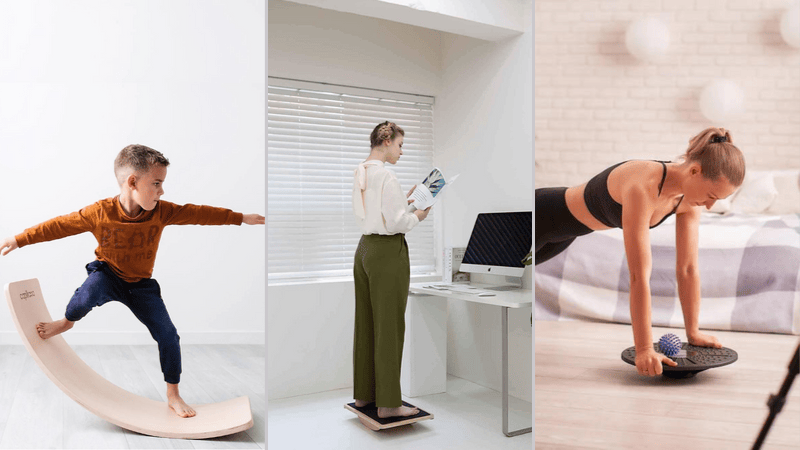Rowing is a low-impact exercise that provides a full-body workout by engaging your core muscles, arms, and legs.
But are rowing machines good for cardio? Expert studies show that rowing machine workouts often stimulate the heart, help shed calories, and boost cardiovascular endurance. In the following sections, we deep-dive into the basics, pros, and cons of adding rowing to your cardio routine.
Rowing Machines and Cardio

Rowing is a great workout that gets your heart pumping, circulates oxygen-rich blood in your body, and strengthens your heart and lungs, the key parts of your cardiovascular system. Rowing also helps you burn calories, which helps with weight loss. It's a full-body workout that uses both your upper and lower body and a low-impact exercise that is easier on your joints.
When you row, you engage many body muscles at the same time, including your legs, back, core, arms, and shoulders. This means your body uses more oxygen, which improves your endurance and overall fitness. This often leads to stronger heart muscles, better blood flow, and larger lung capacity, contributing to better heart health. You can also do interval training on a rowing machine, which is a very effective way to boost your heart health.
Additionally, rowing increases your VO2 max, which is the maximum amount of oxygen your body can use during intense exercise. Increased maximal oxygen consumption is proof of enhanced aerobic capacity and heart health.
Why choose rowing Over other Cardio?
Indoor rowing machines offer many benefits to people of different fitness levels. Here are the critical rowing machine benefits you can expect if you are new to this core exercise:
Pro #1. Low-Impact Exercise
Rowing cardio workout is a low-impact activity for maintaining or improving cardiovascular fitness. Unlike high-impact workouts, which can lead to muscle or ligament soreness, rowing exercises exert minimal strain on the ankles and knees.
The gliding rowing motion and seated position make rowing a joint-friendly option. As a result, you can do a strenuous rowing workout session with no injury risk.
Pro #2. Full-Body Exercise
There is a common misconception that rowing is an arm exercise since you use your arms to pull the handle. However, rowing is a full-body workout involving lower and upper body muscles, including the arms, legs, and trunk.
Besides this, indoor rowing helps improve your upper-body endurance and strength. The repetitive rowing motion strengthens the major muscle groups, making them more resilient. You can burn many calories rowing in a shorter amount of time.
Pro #3. Resistance Training
Rowing cardio machines are great for resistance training. You can adjust the resistance on a rowing machine to accommodate different endurance and strength levels. This also makes them friendly to all fitness levels.
Pro #4. High-Calorie Burn
Rowing machines are more challenging than elliptical machines and stationary bikes. This is because rowing involves many muscle groups, which increase calorie burn. As mentioned earlier, rowing machines require your arms, chest, waist, shoulder, and leg muscles to participate in the pushing and pulling.
According to Harvard Health, a 30-minute rowing session sheds between 210 and 294 calories. The research also shows you can achieve a similar calorie burn with other indoor fitness machines like elliptical machines, stationary bikes, or treadmills. While rowing can provide an intense workout for burning calories, you must be mindful of what you eat to achieve the best results.
Pro #5. A Stronger Core
Rowing pushes and stretches your lower back. Similarly, it contracts your obliques and abs quite a lot, helping you build a stronger core in the long run.
A stronger core can help you maintain correct posture throughout the day. The long-term benefit of a stronger core is a reduced risk of compressed discs, sciatica, or chronic back pain.
Pro #6. Cross Training
Rowing offers a great way to balance your fitness routine and achieve your fitness goals more effectively. It can help boost your strength, endurance, and body awareness alongside yoga, cycling, or running without putting too much stress on your body. Cross-training between rowing and other workout disciplines reduces boredom and offers new physiological stimulation.
Pro #7. Home Gym Friendly
When compared to treadmills and elliptical machines, indoor rowers are more home-gym-friendly. They are space-saving and can be stored vertically. Likewise, rowing machines are less bulky. So, you can move, reposition, and store them vertically with ease.
Frequently Asked Questions (FAQs)
Here are some frequently asked questions about rowing machines and cardiovascular workouts.
Can you get in shape by just rowing?
Yes, you can get in shape by just rowing. Rowing is a full-body workout that engages almost every major muscle group, including your legs, arms, back, and core. It's an efficient way to burn calories and build muscle strength simultaneously.
However, while rowing can help you lose fat and build muscle, it's unlikely you'll get "jacked" just from using your rowing machine without adding in weight lifting exercises.
Is rowing better cardio than a treadmill?
Both rowing and running on a treadmill provide high-intensity cardio workouts, but they target different areas of the body and have different benefits. Running on a treadmill is technically the best cardio there is, so treadmills are generally better for purely cardio purposes.
However, rowing is a full-body workout that activates more muscle groups, making it great for overall fitness and fat burn. It's also a low-impact exercise, which is beneficial if you want to go easy on your joints, whereas a treadmill primarily targets the lower body and is more likely to expend more energy, especially when used at a steep incline.
Is rowing better for you than running?
Rowing is a full-body workout that engages up to 86% of your body's muscles, including both your lower and upper body. It's also a low-impact exercise, which is beneficial for those with joint issues.
Running is predominantly a lower-body exercise, and because the larger muscle group burns more calories, it can be a good choice if you're putting equal effort into both activities. Still, long-distance running may increase muscle protein breakdown, which could slow muscle growth.
So, if your goal is to engage more muscle groups and protect your joints, rowing might be a better choice. But if your primary goal is to burn more calories, running might be more beneficial.

Experience Intense Cardio
You now understand the appeal of rowing as a cardio workout. It uses every muscle with every rowing stroke; arms to pull, legs to push, and the core to provide power, making rowing suitable for cardiovascular strength and endurance.
However, the benefits of rowing as a cardio workout depend mostly on your technique. Get it right; you will effectively burn calories, build stronger muscles, improve strength, and boost cardiovascular health.









